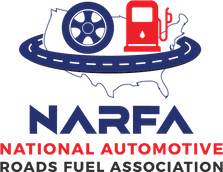The U.S. Department of Labor (DOL), announced a new final rule that clarifies how to calculate an employee’s regular wage rate under the Fair Labor Standards Act (FLSA). The final rule became effective on Jan. 15, 2020.
Calculating the regular rate is an essential first step when determining an employee’s overtime compensation.
Under the FLSA, an employee’s regular rate includes all forms of compensation paid to that employee in a workweek. The final rule clarifies what qualifies as compensation.
The DOL’s stated objective with this rule is to provide more certainty for employers that offer additional perks to their employees, but aren’t sure of whether these benefits should be counted as income under the FLSA.
New Rule at a Glance
- The last updates to the regular rate calculation instructions were made over 60 years ago.
- The final rule accounts for newer forms of employee compensation and benefits.
- The final rule eliminates the “infrequent and sporadic” requirement to exclude call-back pay from the regular rate.
Employer Takeaway
Employers should become familiar with this final rule and adjust their payroll practices to account for this new guidance on what should be considered compensation.
In the simplest terms, the rules say that as long as a benefit is not tied to the quantity or quality of an employee’s work, it does not need to be included in the regular rate of pay. Benefits that meet these conditions as outlined in the Fair Labor Standards Act include:
- Cost of providing parking, gym memberships, wellness programs, tuition benefits and adoption assistance
- Payments for unused paid leave, such as vacation or sick days
- Reimbursed expenses such as cell phone plans, professional memberships, credentialing exam fees and travel (even if the travel is not solely work related)
- Some sign-on bonuses and longevity bonuses
- Cost of coffee, snacks or meals to employees as gifts
The good news for companies is that, even though the new year has begun and the overtime rules have already taken effect, there is no restriction on when new employee benefits can be offered.
Recent Posts
The U.S. Department of Labor Announces Proposed Rule To Protect Indoor, Outdoor Workers From Extreme Heat
The U.S. Department of Labor has proposed a new rule aimed at protecting workers from extreme heat hazards. This initiative seeks to safeguard approximately 36 [...]
Supreme Court Overturns Chevron Deference: What It Means for Workplace Safety and Regulation
The landscape of federal regulation is set for a seismic shift following a recent Supreme Court decision. On June 28, in Loper Bright Enterprises, et [...]
Navigating the Compliance Maze: How NARFA Simplifies Employee Benefits for Automotive and Trade Industries
In today's complex regulatory environment, businesses in the automotive, roads, fuel, and related industries face unprecedented challenges in managing employee benefits. Recent studies show that [...]



